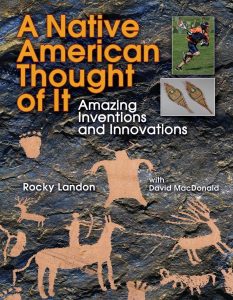 Inventiveness and ingenuity from North America’s First Nations.Everyone knows that moccasins, canoes and toboggans were invented by the Aboriginal people of North America, but did you know that they also developed their own sign language, as well as syringe needles and a secret ingredient in soda pop?Depending on where they lived, Aboriginal communities relied on their ingenuity to harness the resources available to them. Some groups, such as the Iroquois, were particularly skilled at growing and harvesting food. From them, we get corn and wild rice, as well as maple syrup.Other groups, including the Sioux and Comanche of the plains, were exceptional hunters. Camouflage, fish hooks and decoys were all developed to make the task of catching animals easier. And even games-lacrosse, hockey and volleyball — have Native American roots.Other clever inventions and innovations include: Diapers Asphalt Megaphones Hair conditioner Surgical knives Sunscreen.With descriptive photos and information-packed text, this book explores eight different categories in which the creativity of First Nations peoples from across the continent led to remarkable inventions and innovations, many of which are still in use today.
Inventiveness and ingenuity from North America’s First Nations.Everyone knows that moccasins, canoes and toboggans were invented by the Aboriginal people of North America, but did you know that they also developed their own sign language, as well as syringe needles and a secret ingredient in soda pop?Depending on where they lived, Aboriginal communities relied on their ingenuity to harness the resources available to them. Some groups, such as the Iroquois, were particularly skilled at growing and harvesting food. From them, we get corn and wild rice, as well as maple syrup.Other groups, including the Sioux and Comanche of the plains, were exceptional hunters. Camouflage, fish hooks and decoys were all developed to make the task of catching animals easier. And even games-lacrosse, hockey and volleyball — have Native American roots.Other clever inventions and innovations include: Diapers Asphalt Megaphones Hair conditioner Surgical knives Sunscreen.With descriptive photos and information-packed text, this book explores eight different categories in which the creativity of First Nations peoples from across the continent led to remarkable inventions and innovations, many of which are still in use today.
Indigenous
The Ainu: A Story of Japan’s Original People
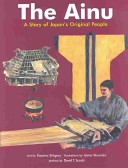
The Ainu examines the culture of the Ainu people of Hokkaido.
Ho-Limlim/Rabbit
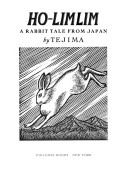
After one last foray far from his home, an aging rabbit decides he prefers to rest in his own garden and let his children and grandchildren bring him good things to eat.
Fatty Legs
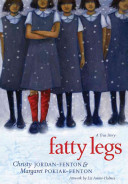
The moving memoir of an Inuit girl who emerges from a residential school with her spirit intact.Eight-year-old Margaret Pokiak has set her sights on learning to read, even though it means leaving her village in the high Arctic. Faced with unceasing pressure, her father finally agrees to let her make the five-day journey to attend school, but he warns Margaret of the terrors of residential schools.At school Margaret soon encounters the Raven, a black-cloaked nun with a hooked nose and bony fingers that resemble claws. She immediately dislikes the strong-willed young Margaret. Intending to humiliate her, the heartless Raven gives gray stockings to all the girls — all except Margaret, who gets red ones. In an instant Margaret is the laughing stock of the entire school.In the face of such cruelty, Margaret refuses to be intimidated and bravely gets rid of the stockings. Although a sympathetic nun stands up for Margaret, in the end it is this brave young girl who gives the Raven a lesson in the power of human dignity.Complemented by archival photos from Margaret Pokiak-Fenton’s collection and striking artwork from Liz Amini-Holmes, this inspiring first-person account of a plucky girl’s determination to confront her tormentor will linger with young readers.
See the review at WOW Review, Volume 4, Issue 2
Tribal Alphabet
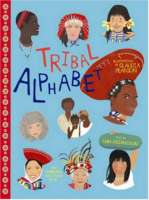
In bold and vibrant colors, artist Claudia Pearson has created a dazzling group portrait of the world of indigenous peoples. Aimed at a young reader audience (ages three to eight), the page text is simple, direct, and informative, while the glossary in the back of the book provides valuable in-depth information for parents and older readers. A percentage of the profits of this book will be given to the not-for-profit foundation Cultural Survival, to aid in its efforts to defend the rights of indigenous people around the world. Claudia Pearson is a Brooklyn-based graphic designer, typographer, and painter. This is her first book.
The Story Of Colors / La Historia De Los Colores: A Bilingual Folktale From The Jungles Of Chiapas
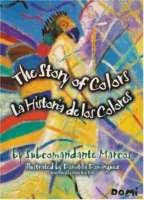
When the NEA -rescinded funding for The Story of Colors, the news hit the cover of the New York Times and made the book an instant bestseller. But far from being subversive, this beautifully illustrated folktale teaches us all about the value of diversity. Old man Antonio tells how a long time ago the world was just black and white and gray. This bored the gods, so they went looking for bright colors and they found them in the most peculiar places!
No one exactly knows who -Subcomandante Marcos is, but since New Year’s Day 1994, when the Zapatistas declared war on the Mexican government, he has become a post-modern revolutionary hero.
La Sirena Y El Pescador
La sirena y el pescador is a traditional folktale of the Rio Balsas region of Mexico, written in the Nahuatl language of San Agustín Oapan, Guerrero and accompanied by a Spanish translation. It tells the story of a young boy who must escape from his family after “Aalamatsin”, the mermaid and mother of all fish, wants the boy as a sacrifice in exchange for the release and pardon of his father, who betrayed his own wife and exploited the inhabitants of the river by overfishing it.
Na ‘Olelo Noeau No Na Keiki: Words of Wisdom for Children
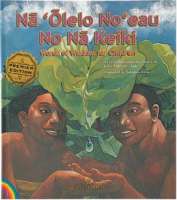
This book is about the words of wisdom from Hawaiian culture.
Grandma’s Chocolate / El chocolate de abuelita
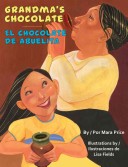
Abuela’s visits from Mexico are always full of excitement for young Sabrina. She can’t wait to see what’s in her grandmother’s yellow suitcase covered in stickers from all the places she has visited. Opening it is like opening a treasure chest, and this year is no different. With her grandmother’s help, Sabrina learns all about the cacao tree, which was first cultivated by Mexico’s Indigenous tribes. Today, seeds from the cacao tree give us chocolate, but years ago the seeds were so valuable they were used as money. This charming bilingual picture book that depicts a loving relationship between grandmother and granddaughter and shares the history and customs of the native peoples, Mayan and Aztec, of Mexico.
Nutik and Amaroq Play Ball

Amaroq is a lively Eskimo boy who fives at the top of the world with his best friend, Nutik, the wolf pup. Amaroq was named after a great wolf leader; Nutik is the wolf leader’s grandpup. The boy and the wolf pup are like brothers.One day Amaroq and Nutik want to play football, but their ball has disappeared. What shall they do? Listening to and observing Nutik’s wolf talk, Amaroq follows him outside. The two friends wander out onto the tundra, where there are no trees, no paths, and no landmarks to help them find their way home again. Amaroq is afraid they are lost, but then he remembers what the great wolf leader he was named after would do. By observing nature and following what it says, Amaroq and Nutik are safe again-but not before finding a surprise for both of them!Amaroq and Nutik’s adventure follows the first picture book about them, Nutik, the Wolf Pup, and continues the Arctic saga about these characters originally drawn from Julie’s Wolf Pack, sequel to the Newbery Medal-winning Julie of the Wolves.
